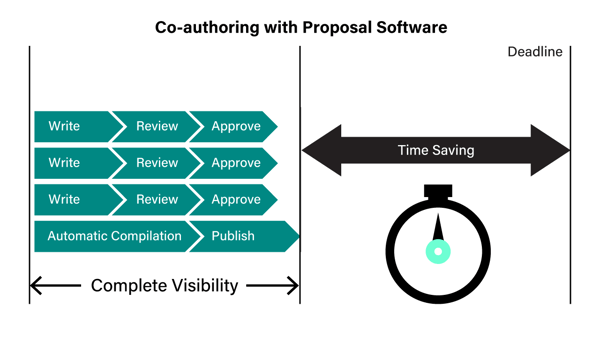
Co-authoring combined with proposal software can be magic
19.02.2020
-2 min

Software
LET'S TALK!
We offer software that makes you win big and ultimately gives you the work-life balance you deserve.

XaitPorter
Co-authoring and automation solution for complex documents

XaitCPQ
Quickly and accurately price combinations of interdependent products and services
XaitProposal
Guided proposal creation for comprehensive, winning proposals
XaitRFI
The smarter way to respond to RFIs, DDQs and security questionnaires
XaitWebProposal
The easiest way to create interactive and custom mini-websites

XaitAI
The X factor for analyzing and writing winning bids and proposals
Industry
OUR SOLUTIONS BY INDUSTRY
Do you have a question about your business vertical?
Resources
RESOURCES
Discover all our Xaiting resources!
About us
LET'S TALK
We can challenge mindsets and make significant changes to the way people interact

Kris Sæther
19.02.2020
-2 min

There are many different proposal software solutions in the market, and they generally fit different segments. A proposal software should make it easier for you to respond to proposals, quicker and more coherently.
However, as the number of participants in the process increases, so does the complexity.
So, what should you take into consideration when choosing a proposal software with multiple participants and stakeholders, and maybe you are in different regions, and you would like to standardize?
These are factors you should look at:
Real co-authoring allows for multiple contributors to work on the same document at the same time. It will have a built-in workflow that enables openness and control at the same time, while breaking down silos. This is not really possible with a solution that is built on files or file sharing using Word.
What often happens in a file sharing solution using Word is that the proposal may be compiled by the proposal software, but tailoring for the opportunity means breaking the proposal into several files. Basically, you do not have real-time co-authoring, and you end up with a check-in / check-out process – a serial process.
With a proposal software solution that enables co-authoring, the whole team works on the same document in real time – regardless of where they are based. This means that the content review and approval process can start in parallel with the content creation.
Contributors, such as SMEs, can get feedback early in the process, instead of days or weeks after they have completed their content creation. Getting delayed feedback could lead to interruption of the process or create another process, delaying the proposal.
The contributors can also see how other team members have responded to a query, and then adjust their language accordingly. A real co-authoring solution also allows the business process owners to manage a corporate-wide process with complete insight into how the proposals are progressing.

The above illustration shows the time savings that can be achieved with co-authoring. A real co-authoring proposal software will give you a parallel proposal process, helping you produce proposals more efficiently, but more importantly, increase the quality of your content. And, that could work wonders for your organization.
Read more: Everything you want to know about proposal software

Kris Sæther
Kris Sæther is Chief Commercial Officer of Xait. He holds a Bachelor of Science in Graphic Media Studies, and has worked in financial communication in London and Frankfurt prior to joining Xait. He has 20+ years experience from the information management industry. Kris is an avid runner and skier, and a passionate fan of the world’s coolest soccer team, Tottenham. If he is not working or running you will find him cheering for his two daughters on the handball court.

